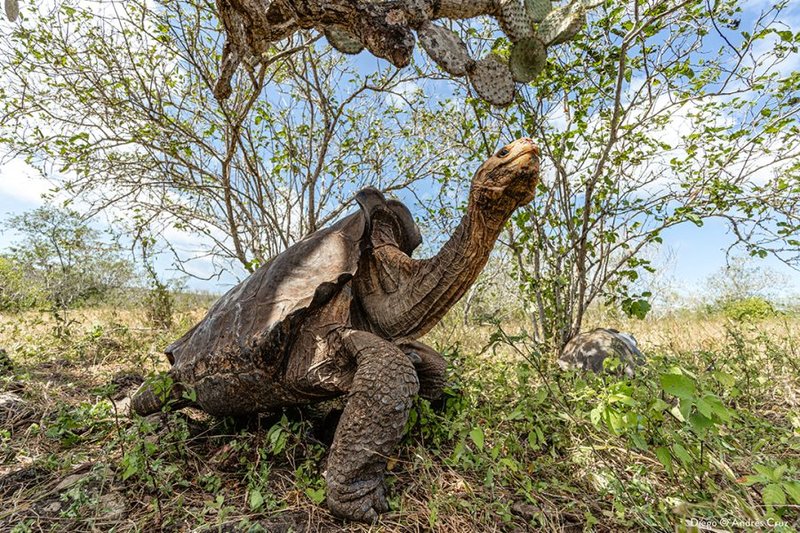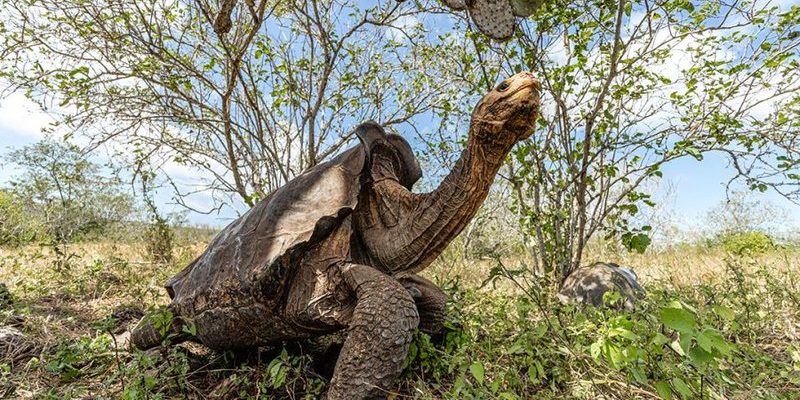
In this article, we’ll take a deep dive into the habitat of Galápagos tortoises, explore their unique ecosystems, and understand where in the world these fascinating animals reside. Think of it as a comforting chat over coffee about a creature that has captured the hearts and minds of so many. So, let’s unravel the journey of these incredible tortoises!
The Galápagos Islands: The Natural Habitat
The Galápagos Islands are a volcanic archipelago located over 600 miles off the coast of Ecuador. This is the primary home of the Galápagos tortoise, a species that has adapted beautifully to this remote environment. Here’s the thing: the islands are not just a vacation paradise; they are a living laboratory of evolution. Each island offers a unique habitat, from lush vegetation to arid landscapes.
You might wonder what makes these islands so special for the tortoises. Well, the variation in climate and vegetation across the islands has led to the development of different subspecies of Galápagos tortoises. For example, the Saddleback tortoise, found on islands with drier conditions, has a longer neck that allows it to reach higher vegetation. In contrast, the Domed tortoise, which thrives in wetter areas, has a rounder shell. It’s like each tortoise has adapted its way of life to fit its surroundings.
Let’s not forget the conservation efforts taking place on the islands. The Galápagos tortoise faced extinction due to human activities and introduced species. However, numerous organizations are working tirelessly to ensure their survival. Now, you can find tortoise breeding programs and protective measures that help maintain their populations. It’s heartening to see that there’s hope for these remarkable creatures!
Beyond the Galápagos: Introduced Populations
While the Galápagos Islands are the natural habitat for these tortoises, they haven’t just stayed put. Some populations have been introduced to other locations, often for conservation purposes. For example, there are small groups of Galápagos tortoises in various zoos and wildlife reserves across the world. These tortoises serve as ambassadors for their species, helping educate people about the importance of conservation.
Additionally, some tortoises have been relocated to wildlife sanctuaries in places like the United States, particularly in Arizona and California. These sanctuaries provide a safe space for tortoises while also allowing researchers to study their behavior and biology. It’s like giving them a second chance at life, away from the pressures of their natural habitat.
Let’s not overlook the role of education and research in these efforts! By studying Galápagos tortoises in different environments, scientists can gain valuable insights into their needs and ecology. This knowledge can help ensure that conservation efforts are tailored to benefit the tortoises effectively.
The Importance of Habitat Preservation
One of the critical aspects surrounding Galápagos tortoises is the importance of habitat preservation. The delicate ecosystems that support these tortoises are under threat from climate change, invasive species, and human activities. Without proper conservation efforts, the future of these tortoises hangs in the balance.
You might be wondering what can be done to help. Well, organizations like the Galápagos National Park work tirelessly to monitor and protect the natural habitats of these tortoises. They implement various strategies, including controlling invasive species and restoring native vegetation. This preservation work is not just about saving tortoises; it’s about maintaining a balanced ecosystem that benefits all wildlife.
Community involvement is also essential. Local inhabitants are engaged in conservation efforts, and eco-tourism is promoted as a way to educate visitors while generating funds for preservation. When communities understand the value of their natural resources, they are more likely to take action to protect them.
Challenges Facing Galápagos Tortoises
Despite the ongoing conservation efforts, Galápagos tortoises face numerous challenges. One of the most pressing issues is climate change. Changes in temperature and rainfall patterns can significantly impact the vegetation that tortoises rely on for food. This can lead to food shortages and affect their overall health and reproduction.
Another significant challenge is the introduction of invasive species. Animals like goats, pigs, and rats have disrupted the natural balance of the islands. They compete with tortoises for food and, in some cases, can be harmful to tortoise eggs and young hatchlings. Tackling these invasive species is crucial for protecting the tortoise populations.
Over-exploitation has also put pressure on tortoise populations in the past. Hunting and illegal trafficking have diminished their numbers. Thankfully, stringent laws and international protection efforts are now in place to prevent such activities in the future.
The Future of Galápagos Tortoises
Looking ahead, the future of Galápagos tortoises relies heavily on ongoing conservation efforts and public awareness. Scientists and conservationists are optimistic, but there’s a lot of work to be done. Programs like the Galápagos Tortoise Restoration Initiative are key in facilitating these efforts. They focus on breeding, habitat restoration, and education to ensure the survival of these iconic creatures.
Additionally, there’s growing recognition of the importance of biodiversity. Galápagos tortoises play a critical role in their ecosystem, helping to maintain the health of the islands. Protecting them means preserving a whole world of life that depends on their existence.
By supporting conservation initiatives, whether through donations or simply spreading the word, we can all play a part in ensuring that these tortoises continue to roam their islands for generations to come. It’s about more than just saving a species; it’s about protecting the rich tapestry of life in the Galápagos.
Galápagos tortoises are more than just a fascinating species; they represent a vital part of our planet’s biodiversity. Understanding where they are found around the world, especially in their native habitat, helps highlight the importance of conservation. The challenges they face are numerous, but with continued effort and dedication, we can help secure a brighter future for these remarkable creatures.
So, the next time you think of Galápagos tortoises, remember they’re not just hanging out on their islands. They’re part of a larger story about life, survival, and the need for our care. Let’s keep spreading awareness and supporting their conservation, because every little bit helps!

